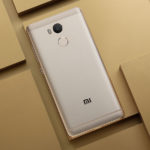SEO has entered a new era in 2026. AI tools are more powerful, users expect instant results and Google continues tightening its criteria for…
Samsung Gear Fit 2 review: more smartwatch than fitness tracker

In the world of wearables, only the practical survive. Sure, gimmicks work for a few weeks, but in the long term, devices that can perform well in almost every situation are usually the ones that outlive all the others. A great example of this? Apple Watch.
It wasn’t the greatest fitness tracker, nor was it a good smartwatch, but it was adequate for both. It beamed notifications to your wrist, and kept up with your pulse at the same time.
A company that’s well versed in both smartwatches and fitness wearables is Samsung. Although it recently faced a few questions regarding its Galaxy Note 7, a device that has largely flew under the radar is the Samsung Gear Fit 2.
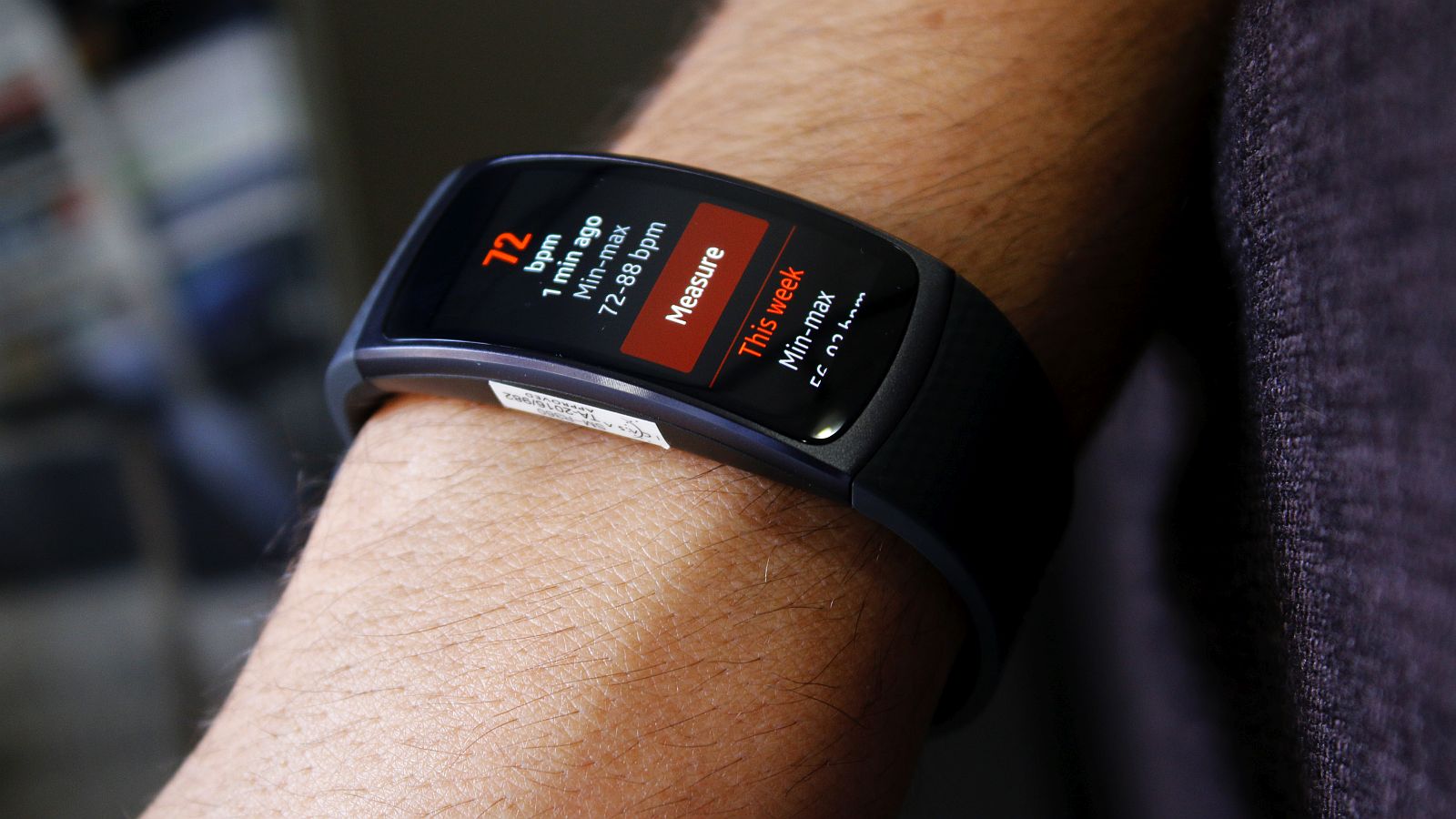
Now in its second iteration, the Gear Fit name bridges the gap between smartwatches and fitness trackers extremely well, without much frills or fuss.
Initial impressions
Packaging isn’t as important as the product itself, but it’s always worth a look. In this case, Samsung’s gone with a simple yet functional package. The Gear Fit 2 is nestled between a foam cut-out and a hard plastic mold, which means dropping the box shouldn’t shatter the band.
The Gear Fit’s wireless charging cradle is also hidden in a sub-compartment, while key how-to booklets, and other warranty cards are stuck in between.
Thankfully, there’s no stupid hidden magnet mechanism in this box; a gimmick that usually serves to push prices higher.
All in all, you’ll get the watch and the charging cradle, but that’s about it.
Design and aesthetic
Once you do pop out the Samsung Gear Fit 2 though, you’ll notice the rather uninspiring design. Let’s be clear: it’s not as dramatic as the Apple Watch, or as quirky as Fitbit’s Charge 2.
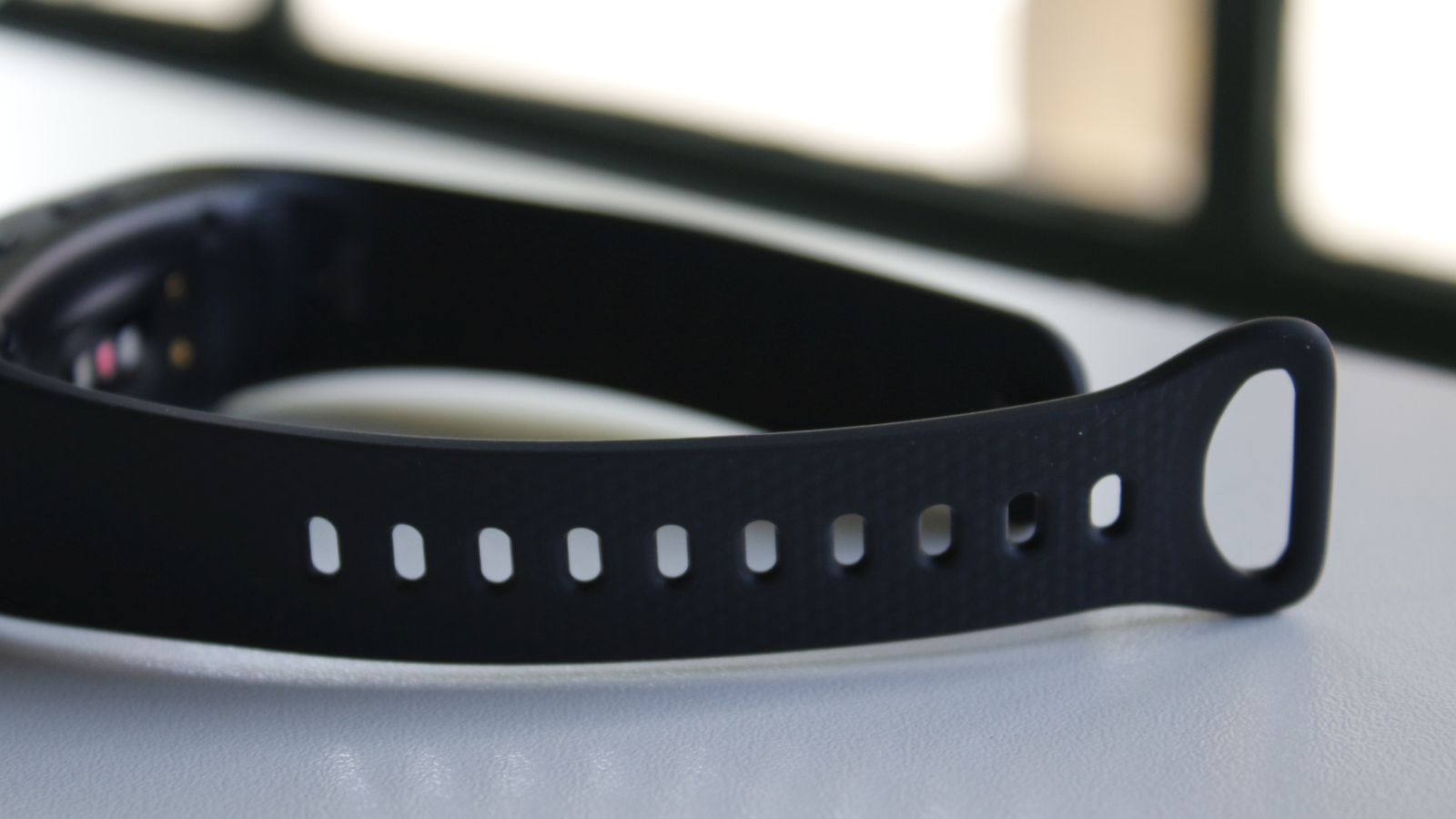
As a fitness tracker, the functional appearance works well on sweaty wrists, but wearables have become as much fashion statements as mere pieces of technology. The black version of the Gear Fit 2 is just plain boring, but there is a dark blue and maroon version available for both large and small arms.
If you do buy the black version, the strap can be replaced by after market bands. But the bands aren’t really the stars of the show: the central module is.
In true 2016 style, the Samsung Gear Fit 2 probably has more power than my very first PC
The Samsung Gear Fit 2’s screen is a gorgeous piece of sAMOLED witchcraft. Boasting a 432×216 1.5-inch display, the Fit 2’s face curves to the bends of your tibia rather well. Visually, the Fit’s screen is probably the best wearable screen I’ve used thus far. It’s crisp, with deep blacks and whites highlighted by vivid colours of practically every hue.
Buttons are also placed on the top and bottom of the device’s right-side, functioning as settings/select and home buttons. Very functional, incredibly simple, no boats have been pushed out here. But that’s okay — there’s no need to innovate here at all.
The Samsung Gear Fit 2 keeps itself fresh internally at least.
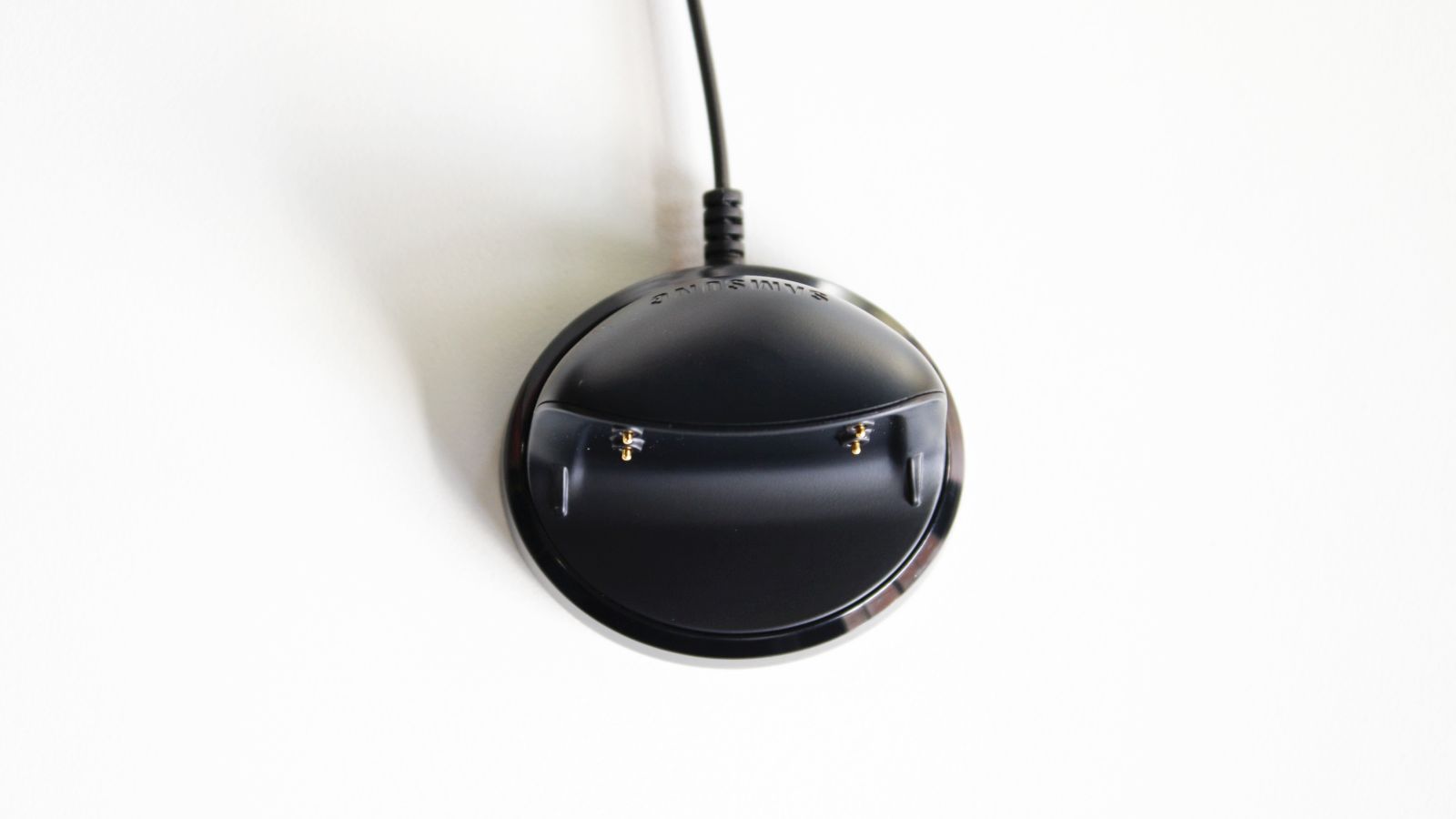
Internals and key functions
In true 2016 style, this wearable probably has more power than my very first PC. Actually, no, no. It definitely it does.
A dual-core 1.0GHz CPU keeps its on-board apps and systems humming along, with 512MB of RAM for help. Internally, there’s also 4GB of storage for users’ music and additional files, and a 200mAh battery to keep the lights on.
The Gear Fit 2 itself boasts an IP68 water-resistance rating, which means swimming or bathing with the device isn’t an issue at all. Keeping it connected to your smartphone is courtesy of a Bluetooth 4.2 LE radio, while the Fit 2 also boasts built-in GPS and GLONASS for tracking runs on the world map. That’s a huge bonus, and means that you don’t need to lug around a smartphone when going for a jog.
And the feature list doesn’t quite stop there. Samsung has also included a heart-rate monitor, a gyroscope, an accelerator and a barometer. To be fair, I’m not sure how Samsung packed all this into the Fit 2’s relatively small body, but it’s all there.
As for software, it’s not running Android Wear but Samsung’s own Tizen 2.3 instead, which powers its televisions, other wearables and even a few smartphones.
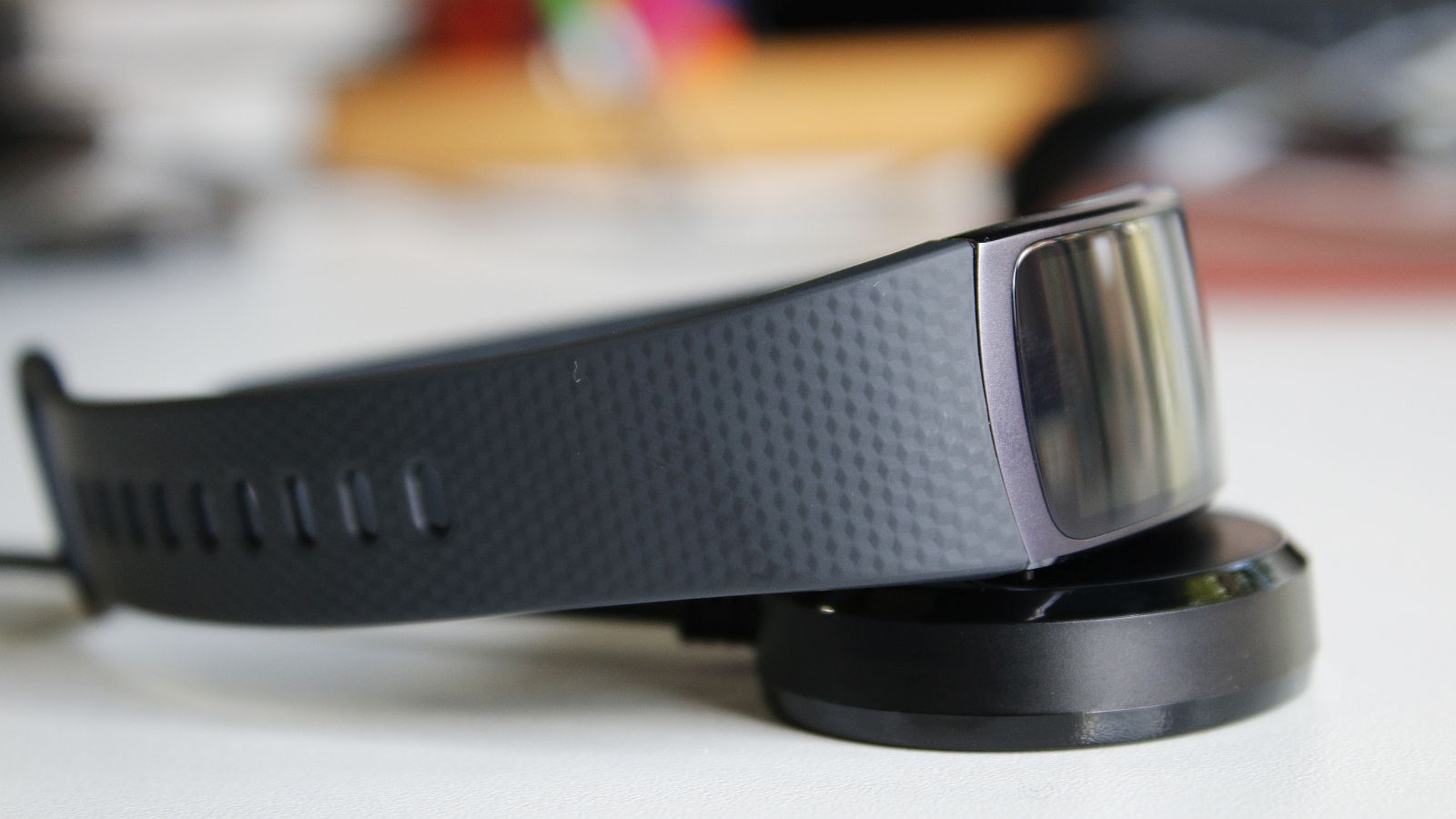
Tizen and Samsung’s mobile appsc
Although it used to be a warm turd, Tizen has grown into an admirable, and extremely functional OS.
Unlike the innovative Samsung Gear S2 — which boasted a rotating bezel-cum-menu dial — the Samsung Gear Fit 2 has to settle for a scroll-this, scroll-that style UI. It’s much simpler to use though, but lacks the theatre of the S2. Still, Tizen nevertheless appears with its usual circular and bright icons.
The OS itself is incredibly swift. Browsing the Fit 2’s menus as fervently as possible produced no noticeable lag or screen glitching of note. Everything rendered, no icons were jagged, and the watch itself remained calm under pressure.
Sure, a few watch faces took a number of ticks to update. “Why aren’t my steps climbing?”, I wondered as I walked down the street glancing at the watch. But this was remedied a few seconds later. Beyond this, watch faces are plentiful, and all seem relatively swift and functional.
Speaking of visuals, these lead to the Samsung Gear Fit 2’s multitude of apps.

In this sense, the Samsung Gear Fit 2 feels more like a smartwatch than a fitness tracker. It smashes the Fitbit Blaze, but can’t quite embarrass the Apple Watch.
At least the Gear Fit 2’s apps can be removed, added, rearranged and downloaded from the Tizen store. This goes for preinstalled apps, like “Coffee” and “Water”, which allows you to log how often your face requires its caffeine binge. An “Exercise” app lets you pick a routine and run with it (pun intended), while the heart-rate app forces the Gear Fit 2 to do an instantaneous check on your pulse.
All very functional then, and perfect for those not versed in finding and installing apps themselves. That said, for those who do want more apps, there aren’t many.
As a smartwatch, it smashes the Fitbit Blaze, but can’t quite embarrass the Apple Watch
Tizen’s app store is a cluttered mess, thanks to Samsung’s awkward dashboard in its Gear Fit Android software. Browsing them, finding them and adding them requires a Samsung account, navigational skills and patience.
When you’re not hunting third-party apps, Tizen itself is a pleasure to use.
It supports notifications and on-the-fly replies for messaging apps too, thanks to a one-tap-answer system. You’ll also be able to read full emails, answer calls and control music stored on the Fit 2, and on your phone. TL;DR: it’s a smartwatch.
Mobile app support
With its smartwatch prowess, Samsung has thankfully improved its once-awful Gear Fit Android app suite. It’s now a much quicker, sleeker and seemingly lighter app that allows almost instantaneous changes. From the app, you can change the Samsung Gear Fit 2’s watch face, or adjust which apps you’d like displayed on the watch’s primary menu.
It feels more intuitive than Fitbit Blaze controls on the former’s app, but it also comes with added bulk.
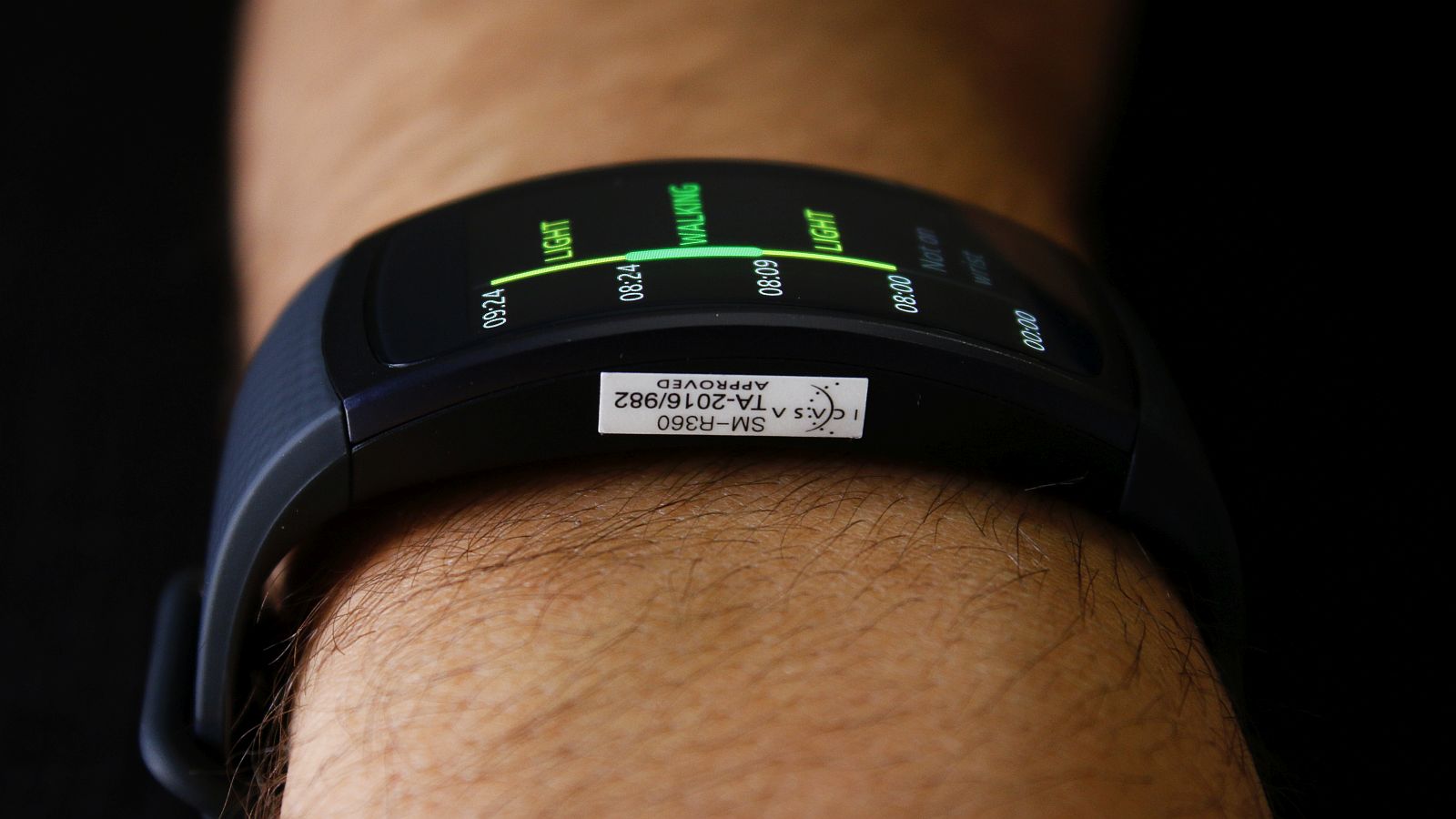
To connect the Samsung Gear Fit 2 to a non-Samsung device, you’ll need to download and install about three apps in total. You can also install S-Health as well for fitness tracking monitoring on your smartphone. Still, that’s a bit too many, Samsung.
Getting the Gear Fit 2 working on your phone will require a spare ten minute to download, install and tick various legal check marks on the watch and phone. It’s probably too complicated for first-time buyers to use, and I can’t quite understand why a single app can’t just suffice.
Daily use and practicality
And this gets us neatly into actual real-world applications.
Battery-wise, you’re looking at around three days per charge (if you’re lucky). Switching the screen to its battery-saving black-and-white mode, this figure jumps into the six-day range. Remarkably impressive, to be fair.
I’m not too sure how the Fit 2 knows I’m burning calories if I’m not wearing it
In terms of fit, Samsung’s Gear Fit 2 doesn’t stand too far off your wrist but you’ll definitely know it’s there when you bang it into a table. This largely forces you to wear the watch on the outside of your wrist, instead of around the sometimes more comfortable inside. So it’s bulky, but it’s no more voluminous than the Fitbit Charge HR.
You can sleep with the band on, but I found it uncomfortable. You’ll be required to do this to track your sleep though, something the Samsung Gear Fit 2 is clearly very, very good at doing. Honestly, it’s about as good here as the HR.
And unlike the HR, the Fit 2 loves water. I didn’t bother taking it off when doing the dishes, showering or bathing, and it showed no ill side effects. But while swimming with the watch is fair game, I do have a few issues with its actual fitness tracking prowess.
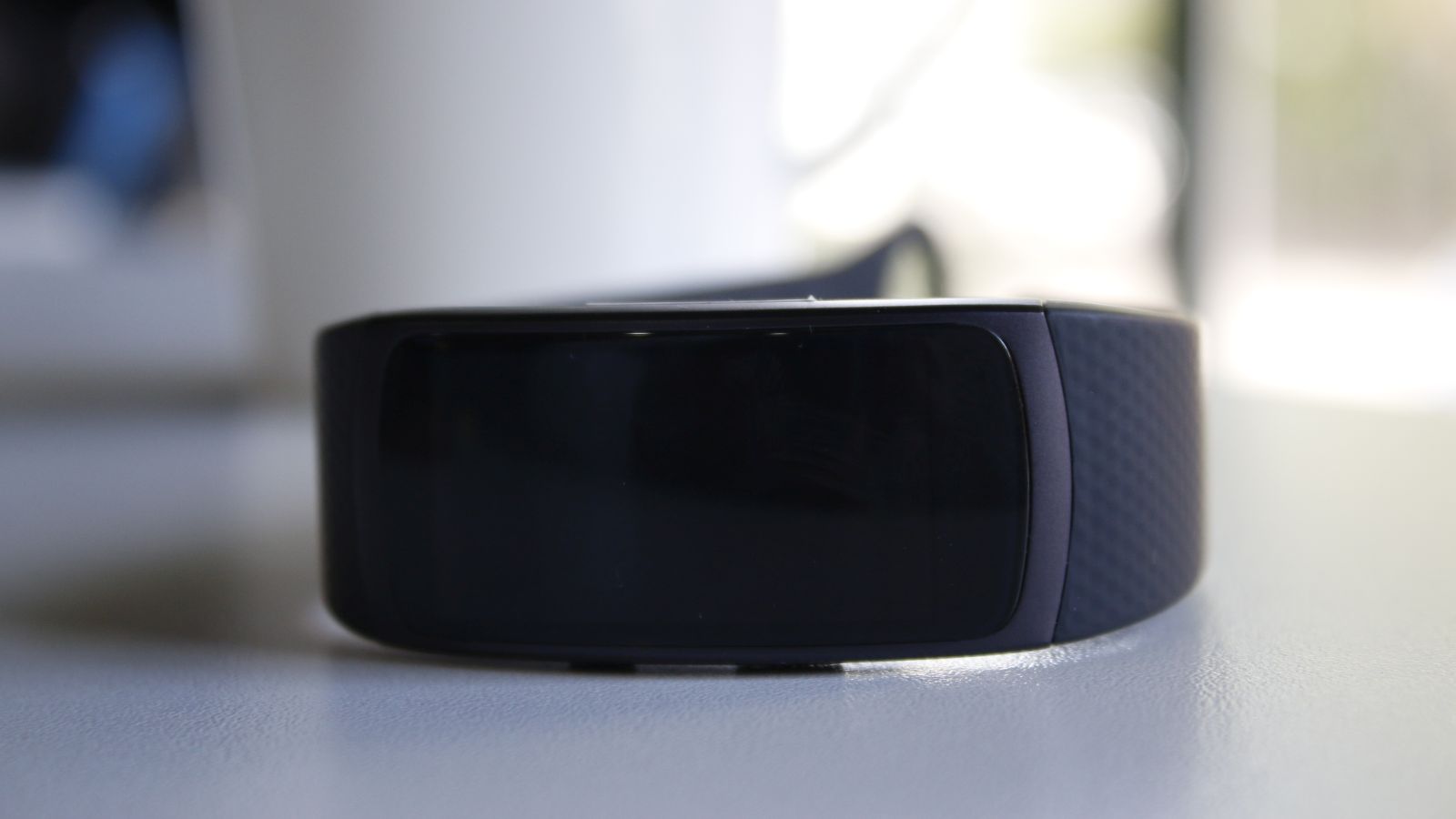
For one, I’m not totally convinced its as accurate as the Charge HR — my former long-term fitness tracker. Samsung Gear Fit 2’s floors counter is massively flawed (pun probably intended). I’m not sure, for instance, how I could climb 30 floors in a day sitting on the couch on the weekend. It’s great that you’re trying to buff my ego, Samsung, but really? I’m also not too sure how I manage to burn calories without actually wearing the Fit 2, or when it’s charging in its cradle.
There’s a degree of guess work involved in fitness tracking that I am well aware of, but there’s a difference between an educated punt and a fool’s stab in the dark. Granted, tech manufacturers don’t exactly have the technology to truthfully gauge just how much work we’re doing, or how many floors we’re climbing, but should a fitness tracker really be this inaccurate? No, definitely not.
As a saving grace though, steps taken seems fairly accurate, this at least compared to my current fitness tracker, the Fitbit Blaze. Swinging your wrists don’t really add erroneous steps to the total.
If inflating floor and calories counts aren’t doing much for your ego, Samsung’s gamification of its tracking system probably will.
The Gear Fit 2 is sure to buzz loudly when you’ve reached a goal, which is always a great feeling. Addiionally, you can challenge friends and family who also have a Samsung account to fitness duels. This all works effectively on the Samsung Gear Fit 2. But is it the real selling point?
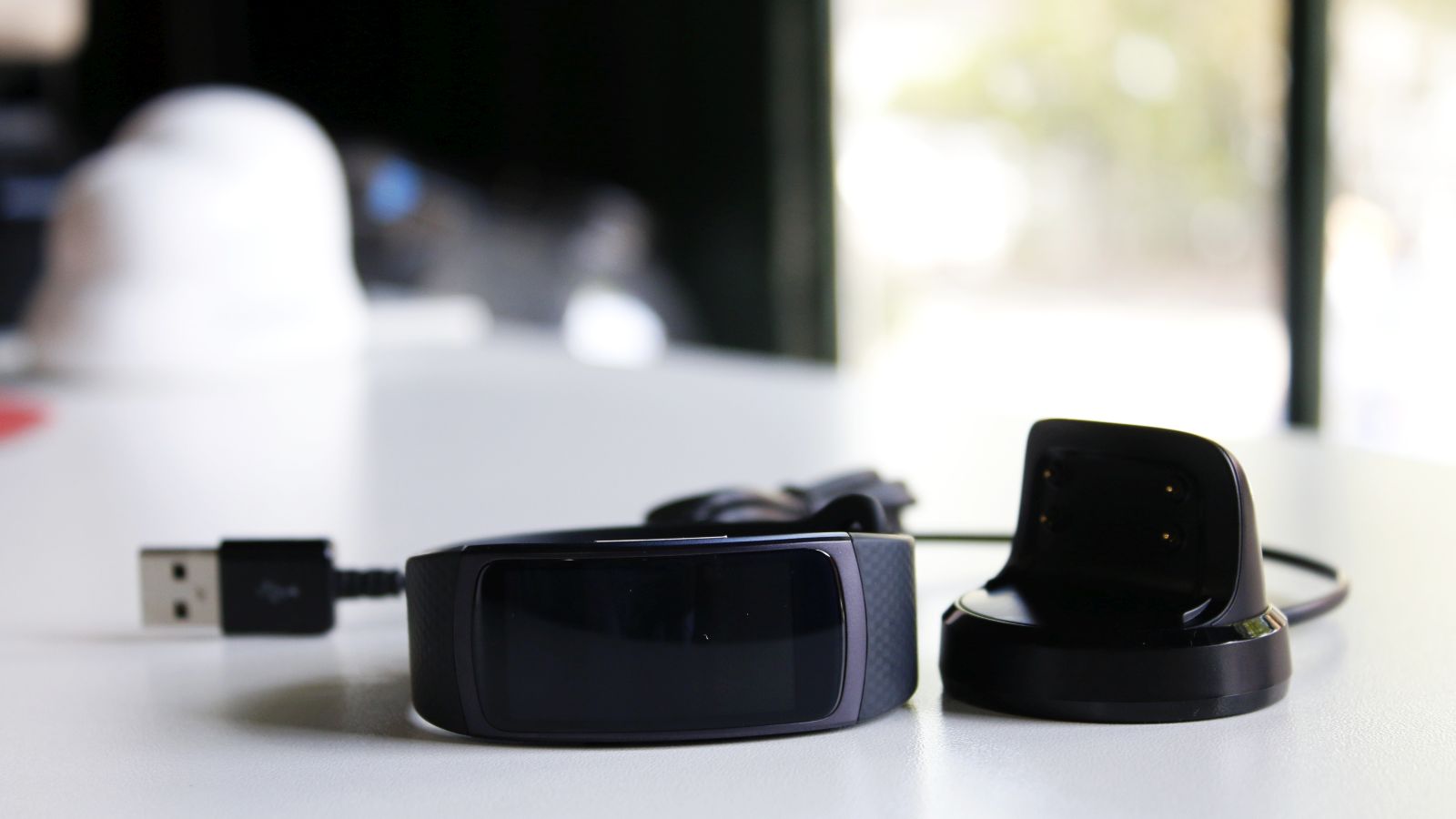
To be quite honest, what is the real selling point of this device?
Conclusion
At around R3000, the Samsung Gear Fit 2 isn’t cheap, but it’s not in the realms of ludicrous either. In fact, it’s probably one of the best bang-for-buck trackers in the market, fit with tracking and smartwatch functionality. But it’s not perfect, not by any means.
I can’t help but feel it focuses more on smarts than accuracy. Yes, I do love the smartwatch functionality — and in this regard, it totally destroys the likes of the Fitbit Blaze — but arguably, it’s not as deft in understanding its human owner as it should be.
Granted, this could be fixed with a simple software tweak I’m sure, but as it stands, there are better fitness trackers out there. The real question is, can you live without the smartwatch functionality?
Positives
- It’s slim, sleek and hardy with a waterproof body
- That screen is utterly, utterly gorgeous
- Its smartwatch skills can rival Android Wear
Negatives
- Fitness tracking feels more like fitness guessing
- The Tizen store remains fairly empty
- Although improved, Samsung’s smartphone apps are still problematic
Verdict: The Samsung Gear Fit 2 is more evolution than revolution. Unlike other fitness trackers, it adds valuable smartwatch features to a slim and simple design but that seems to come at the price of inaccurate, and oddly vague fitness readings.
Score: 7/10

